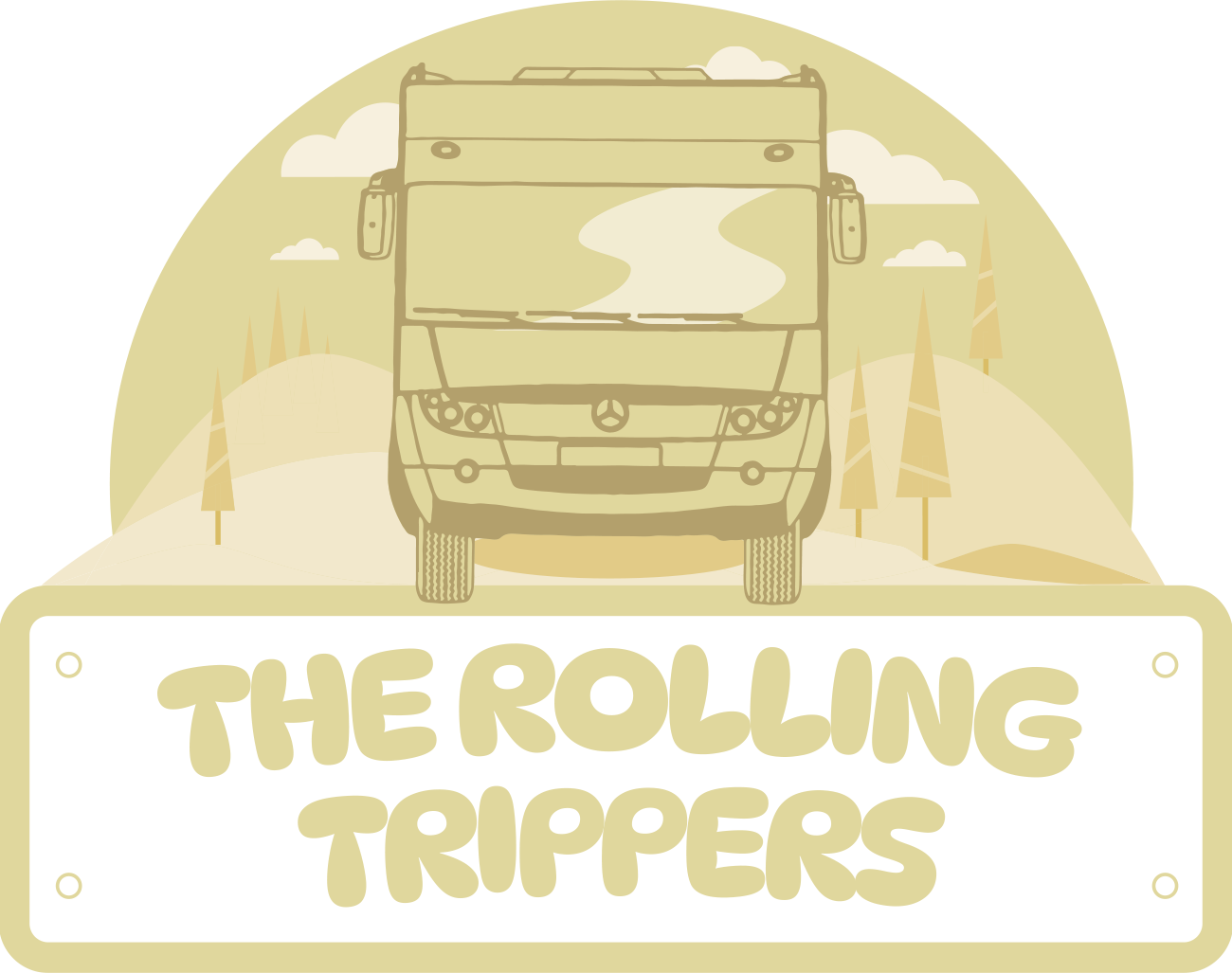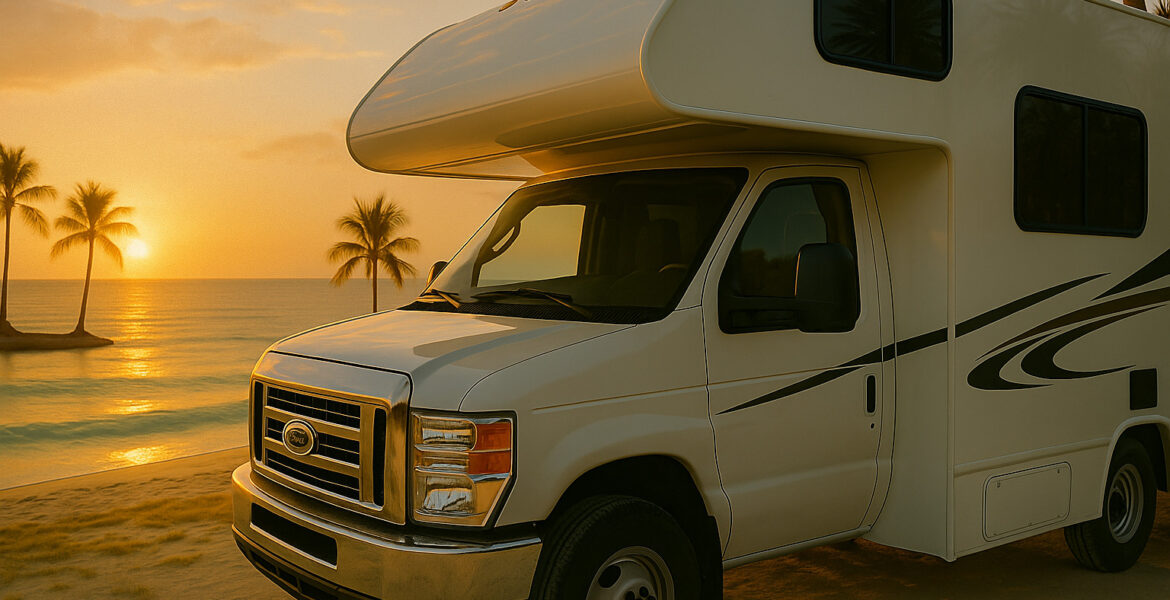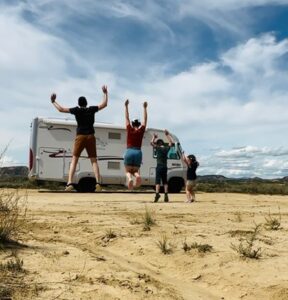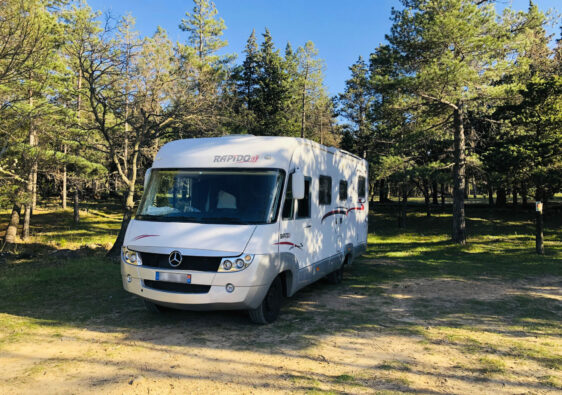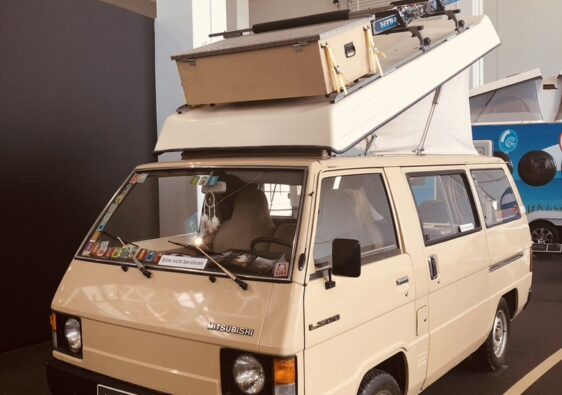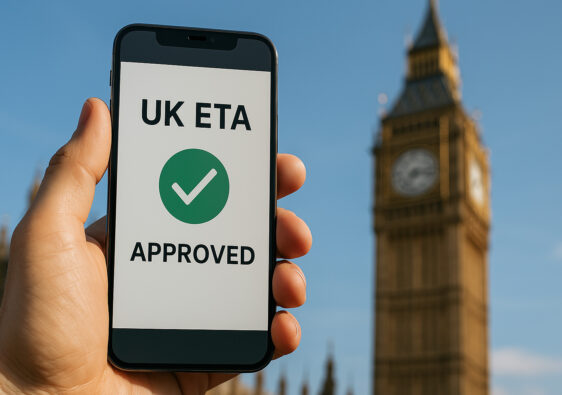Close your eyes for a second. 😵💫
Imagine the Florida sun caressing your face, palm trees swaying along endless roads, and that feeling of total freedom at the wheel of your home on wheels. The “Sunshine State” welcomes you! It’s a dream destination, known for its larger-than-life theme parks and as the starting point for many travelers, especially thanks to Caribbean cruises.
Except, here’s the thing: between the Instagram dream and reality, there’s often a world of difference… and an ocean of questions. 👇
Where do we start? How much does it REALLY cost? What type of RV should I choose? Are we going to struggle to drive this American tank? And most importantly, how do you prepare for an RV road trip without forgetting anything?
Breathe. That’s what we’re here for. 😎
Our mission? To give you all the keys, tips, and concrete plans so that your only worry is choosing the right playlist for driving down the Overseas Highway.
So, fasten your seatbelt. We’re taking you on the road trip of a lifetime!
Renting an RV in Florida: good or bad idea?
Before diving headfirst into the comparison sites, let’s ask ourselves THE essential question. Is an RV trip, and more specifically one in Florida, right for you?
Because yes, we’re selling a dream, but let’s be transparent. There are incredible advantages, and a few realities to be aware of.
The undeniable advantages of RV life in the sunshine state
✨ Freedom with a capital F
This is the number one benefit. Absolute. Total. No hotels to book months in advance, no suitcases to pack and unpack every two days. One morning, you wake up with an urge to see manatees? You start the engine and go. Your itinerary is a suggestion, not a sentence. You’re the boss. 🗺️
🌿 Nature as your next-door neighbor
Forget views of the hotel parking lot. In an RV, you wake up to the sound of the waves, the song of tropical birds, or in the heart of a lush state park. It’s the promise of total immersion, far from the tourist crowds. Want to see a sunrise on the beach? Your bed is 20 meters away.
💰 A wallet that can breathe (a little)
Hold on, we’re not saying it’s free. But by combining your accommodation and your mode of transport, and especially by having the ability to cook your own meals, you can save a lot of money on the biggest expense categories: food and lodging.
Things to be aware of before you get started
💸 The cost isn’t always tiny
Yes, you can save money, but renting an RV has a high base cost, especially in high season. Add to that the price of gas (an RV is thirsty!), campground fees, and insurance… the final budget can be surprising if you’re not well-prepared. We’ll talk more about that right after.
🚚 Driving the ‘behemoth’
Going from a Clio to a 9-meter-long vehicle takes a little getting used to. Maneuvering, parking, sharp turns in the city… It’s not insurmountable, far from it, but you have to be comfortable with the idea. If driving an RV makes you anxious, you should think twice.
🤔 A… different kind of comfort
It’s a house on wheels, not the Ritz. Space is limited, you have to manage fresh water supplies and empty the waste water tanks… It’s all part of the game and the adventure! But if your definition of a perfect vacation includes room service and a king-size bathtub, you might be disappointed.
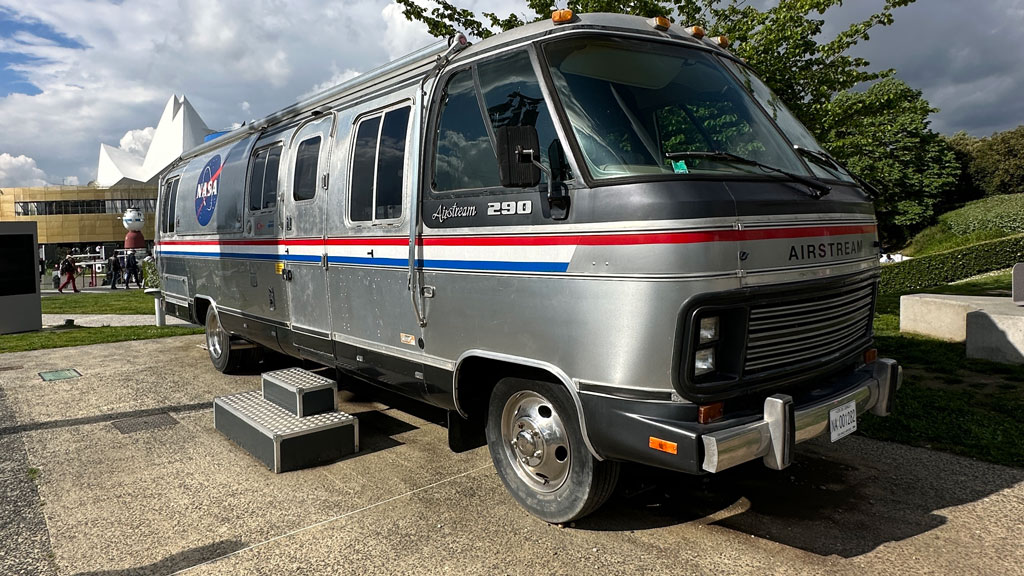
The heart of the matter: the budget for your RV rental in Florida
Here we are. The million-dollar question (or close to it). 🤑
Talking about budget isn’t very sexy, but it’s the key to a stress-free trip. To give you a clear idea, we’ve broken down all the costs. Just numbers, so you can prepare your financial battle plan.
The cost of the vehicle rental: what to expect?
This is the biggest piece of the pie. The price of renting an RV (Recreational Vehicle, as they say over there) in Florida varies HUGELY depending on 3 criteria:
- The season: High season (from December to April, and the summer) is much more expensive than the low season (May-June, September-October).
- The type of vehicle: A camper van for two will cost less than a monster Class A for 6 people.
- The rental duration and how far in advance you book: The longer you rent for and the earlier you book, the lower the daily price.
To put it simply, expect a wide range: between €100 and €350 per day.
Here’s a small summary table to make things clearer:
| Type of Cost | Price Range | Our Notes / Tips |
|---|---|---|
| Vehicle Rental | €100 – €350 / day | Book in the off-season and at least 6 months in advance for the best rates. Compare platforms like Yescapa which may offer peer-to-peer options. |
| Insurance (SLI/CDW) | €20 – €50 / day | This is NON-NEGOTIABLE. NEVER skip it. We’ll explain why just below. |
| Mileage package | €0 – €50 / day | Some rental companies include unlimited miles, others charge after a certain threshold (e.g., 100 miles/day). Be careful, it adds up fast! |
The advertised price is one thing. The real cost is another. Here are the additional expenses to absolutely include in your budget.
⛽ Gas, your best frenemy
An RV is thirsty. Very thirsty. A standard model consumes between 20 and 30 liters per 100 km (around 8-12 MPG). With the price per gallon (about 3.8 liters) varying, set aside a large envelope for fuel. Our tip: use the GasBuddy app to find the cheapest stations around you.
⛺ Nights at campgrounds
Wild camping is almost impossible in Florida. So you’ll have to pay for your campsites. Expect to pay between $35 and $90 per night for a site with full hookups. State Parks are often cheaper and beautiful, but you need to book them months (or even a year) in advance!
🛡️ Insurance, your life jacket
We’ll say it again: it’s vital. You will need at least SLI (Supplemental Liability Insurance), which covers damages to third parties. Most rental companies also offer collision/comprehensive coverage (CDW/VIP). Yes, it increases the bill, but it will save you from going broke in case of a mishap.
🍳 Equipment kits and propane
Dishes, sheets, towels… These are often extra (“convenience kits”). Expect to pay around $50 to $125 per person. Propane gas for cooking and heating is also sometimes billed at the end of the trip.
OUR TIP FOR YOUR BUDGET 👇 Don't think in 'price per day'. Think 'total cost of use' for your trip. Calculate: (Rental price/day + Campground price/day + Gas budget/day + Insurance/day) x Number of days. This is the only calculation that will protect you from nasty surprises.
Anticipating your budget properly is the foundation for not making one of the 10 beginner mistakes to absolutely avoid in an RV.
How to rent your RV: a practical step-by-step guide
Okay, you’re convinced. Now, how do we go from idea to reservation? Don’t panic, it’s much simpler than it looks. It’s time to play “Choose your champion”! 🚐
What type of RV to choose? (class a, b, or c)
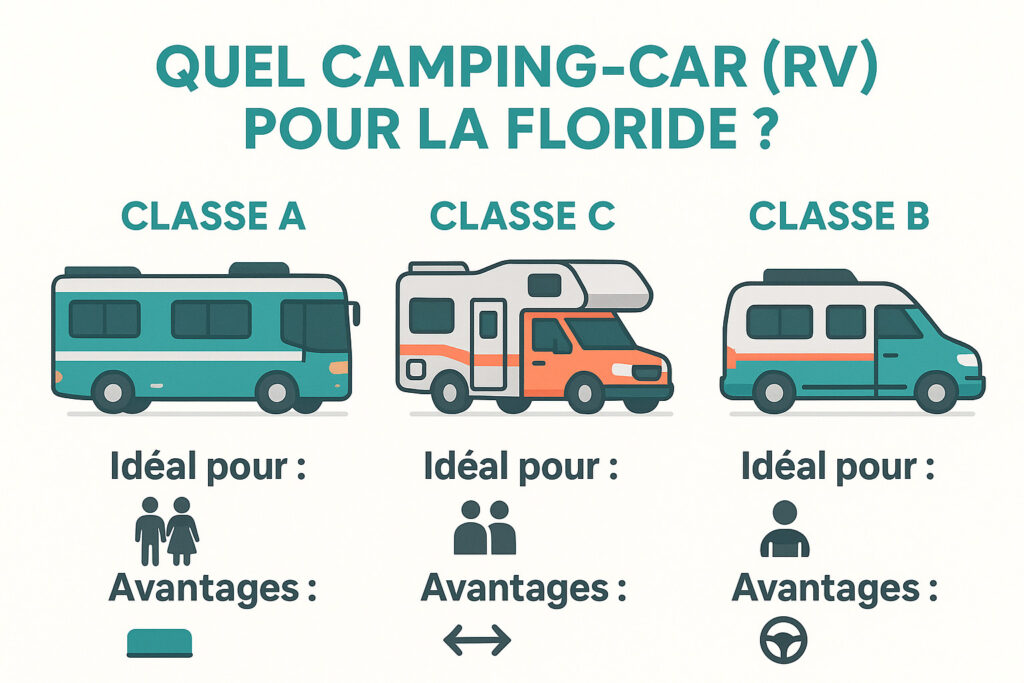
In the United States, they don’t talk about “low-profile” or “integrated” motorhomes, but “Classes”. We’ll decode it for you.
- 🚍 Class A: The ‘Rock Star Bus’
This is the biggest, most luxurious one. A real converted bus. Ideal for large families or groups who want maximum comfort. Be warned, it’s also the most expensive and the most intimidating to drive. - 👨👩👧👦 Class C: The ‘Swiss Army Knife’
This is THE most common and popular model. You’ll recognize it by the overhang above the driver’s cab (the “cab-over”). It offers an excellent compromise between living space, comfort, and ease of driving. Perfect for a family of 4 or two couples. The sensible choice for a first trip! The final choice will really depend on your travel style, much like the eternal debate between a vintage van and a vintage RV. - 👫 Class B: The ‘Go-Anywhere Van’
This is a converted van (or “camper van”). Compact, maneuverable, and more discreet, it’s perfect for a couple. It’s easier to park in cities and consumes less fuel. On the downside, the interior space is more limited (compact shower and toilet).
The main rental companies: our opinion
The American market is dominated by two giants:
Cruise America: They are the “McDonald’s” of RV rentals. You can’t miss them with their white vehicles with blue designs. They are everywhere, their fleet is standardized, and it’s a reliable, no-surprises choice. The service is often efficient, though sometimes a bit “assembly-line.”
El Monte RV: The direct competitor. They have an equally vast network and often offer a wider variety of vehicle models. Their rates are competitive and it’s an excellent alternative to Cruise America.
Our advice: Use an online comparison tool (like Motorhome Republic or CamperDays) to get an overview of the offers. But before you book, always check recent Google reviews for the specific rental location where you’ll be picking up the vehicle (e.g., “Cruise America Miami reviews”).
Do you need an international driving permit? 📄
This is the question that stresses everyone out. So, we’re going to answer it once and for all.
The short answer? No, in most cases, your national driver’s license (e.g., from the UK or EU) is sufficient to drive all types of RVs in the United States.
The long, more cautious answer? Yes, we STRONGLY recommend getting one before you leave.
Why? An International Driving Permit (IDP) is just an official translation of your national license. It’s not expensive (it’s even free in some countries), is valid for 3 years, and will give you absolute peace of mind. If you get pulled over by a police officer who is unfamiliar with your license format, or deal with a rental agent who is a little too zealous, the IDP will defuse any complicated situation. It’s your “peace-of-mind card.”
Our itinerary ideas for an unforgettable Florida road trip
The tank is full, the playlist is ready, the fridge is stocked with goodies. Now what? Where do we go? 🤔
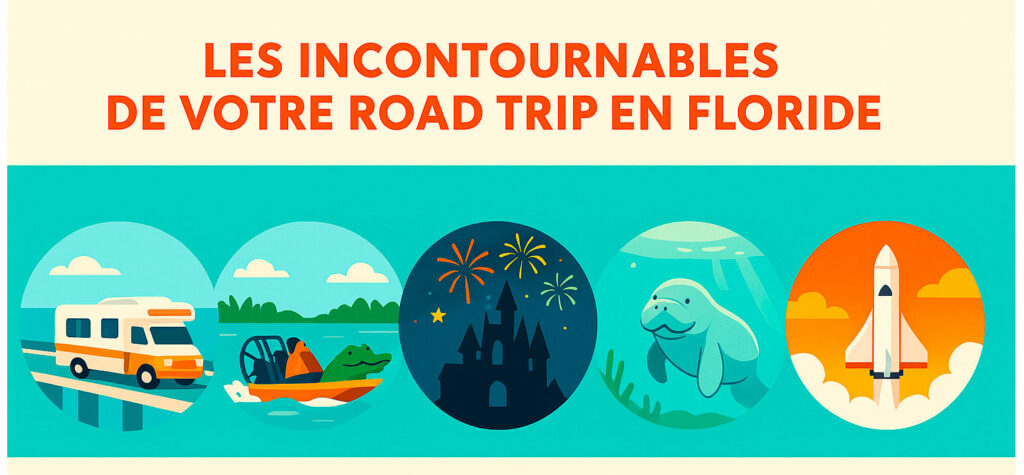
Florida is a huge playground. To help you see things more clearly, here are our suggestions for itineraries, tested and approved. Consider them a base, an inspiration. The name of the game is to make them your own!
The classic 10 to 15-day itinerary: the must-sees
This is the perfect loop for a first-time visit. It concentrates the best of Florida without forcing you to spend your life on the road. Ideal for a two-week trip.
📍 The route: Miami → The Keys → Everglades → West Coast (Naples/Fort Myers) → Orlando → Cape Canaveral → Miami
- Days 1-3: The Keys & Key West 🏝️
Pick up your RV in Miami and head south. The road ahead, the Overseas Highway, is a pure marvel. Float above the turquoise water from bridge to bridge all the way to Key West, the southernmost point of the continental United States. Laid-back vibe, colorful houses, and legendary sunsets at Mallory Square. - Days 4-5: The Everglades 🐊
Head back to the mainland to explore this unique ecosystem. On the agenda: an “airboat” ride to weave among the alligators, hiking on boardwalks, and spotting thousands of birds. An unforgettable wild immersion. More info on the official Everglades National Park website. - Days 6-8: The West Coast & its beaches ☀️
Head to the West Coast, known for its calmer atmosphere and white sandy beaches. Stop in Naples for chic vibes, Sanibel Island to collect shells by the thousands, or near Crystal River for the unique chance to swim with manatees (in winter). - Days 9-12: Orlando & theme parks 🎢
What would Florida be without its parks? Park your RV in a comfortable campground and take on Disney World or Universal Studios. A magical and thrilling break that will please both kids and adults. - Days 13-14: Cape Canaveral & return 🚀
Before closing the loop, take a detour to the Kennedy Space Center. Walking next to the Space Shuttle Atlantis is a goosebump-inducing experience. A relaxed drive back to Miami to return the vehicle, your head full of memories.
The 3-week grand tour: for an in-depth exploration
Got more time? Perfect! With 3 weeks or more, you can really get off the beaten path and discover other facets of Florida.
📍 The route: Take the classic itinerary and add a northern loop.
After Orlando, instead of heading back down, drive north to St. Augustine. It’s the oldest (continuously-inhabited European-established) city in the United States! A completely different atmosphere with its cobblestone streets, Spanish fort, and fascinating history. Afterwards, you can drive along the “Panhandle” coast in the far northwest, known for its pristine, Caribbean-like beaches (Pensacola, Destin).
Focus on can’t-miss spots
Whatever your itinerary, here are the experiences you absolutely shouldn’t miss:
- Driving over the Seven Mile Bridge in the Keys.
- Taking an airboat ride in the Everglades.
- Watching a rocket launch at Cape Canaveral (check the schedule!).
- Swimming in a spring, a source of crystal-clear freshwater (Ginnie Springs, Blue Spring State Park…).
- Watching a sunset on the Gulf of Mexico coast.
Life on board: practical tips to survive (and love it) on the Florida roads
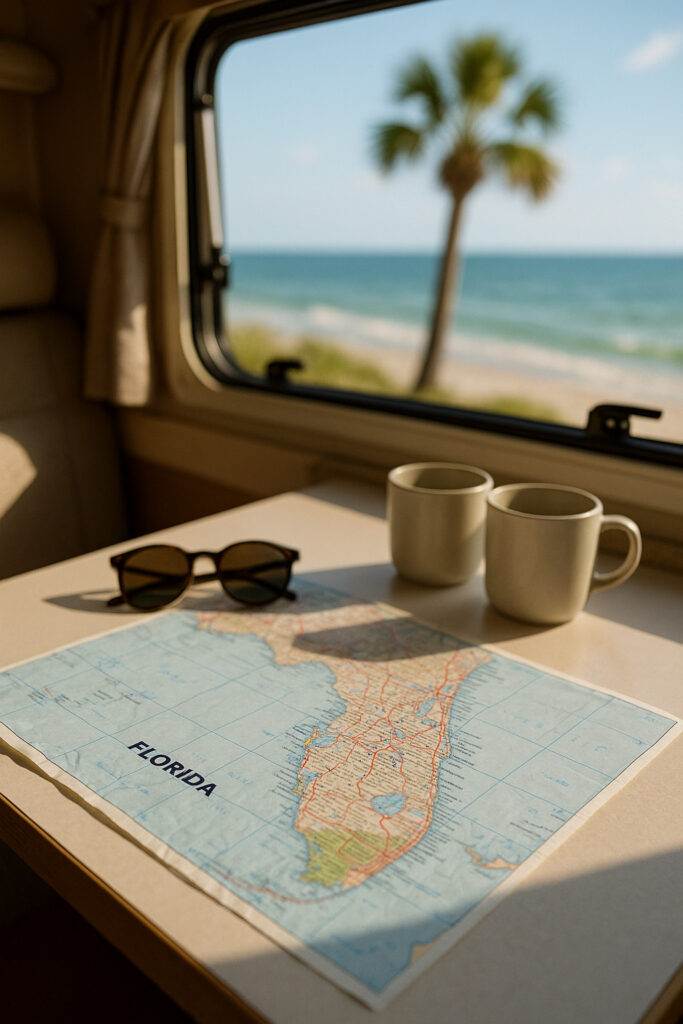
Getting the keys to the RV is like unlocking a new level in a video game. But to win, you need to know the rules and the “cheat codes.” 😉
Here are our tips to make life on the road as sweet as a Key Lime Pie.
Driving an RV in Florida: what really changes
We’ve already mentioned it, but let’s talk about it concretely. Driving an RV isn’t complicated, it’s just… different.
📏 The size, your new obsession: The first thing to do when you pick up your vehicle? Take a picture of the stickers indicating the height and length. Memorize them. These are your new lucky numbers. They will prevent you from getting stuck under a gas station awning or a low bridge. The stress of the first few kilometers is normal, but you’ll see, you get used to the dimensions of your new toy quickly.
🅿️ Parking, easier than in Europe: Good news! America is the land of excess. Supermarket (Walmart, Publix) and mall parking lots are huge. You will almost always find a place to park, even if it means parking a bit further out. In cities, it’s a different story. The best option is to leave the RV at the campground and use public transport or a rideshare service.
⛽ Refueling: Gas stations are adapted for large vehicles. No stress on that front. One American peculiarity: you often have to pay before you pump, either by pre-paying inside or directly at the pump with a credit card.
Where to sleep? the guide to campgrounds and wild camping
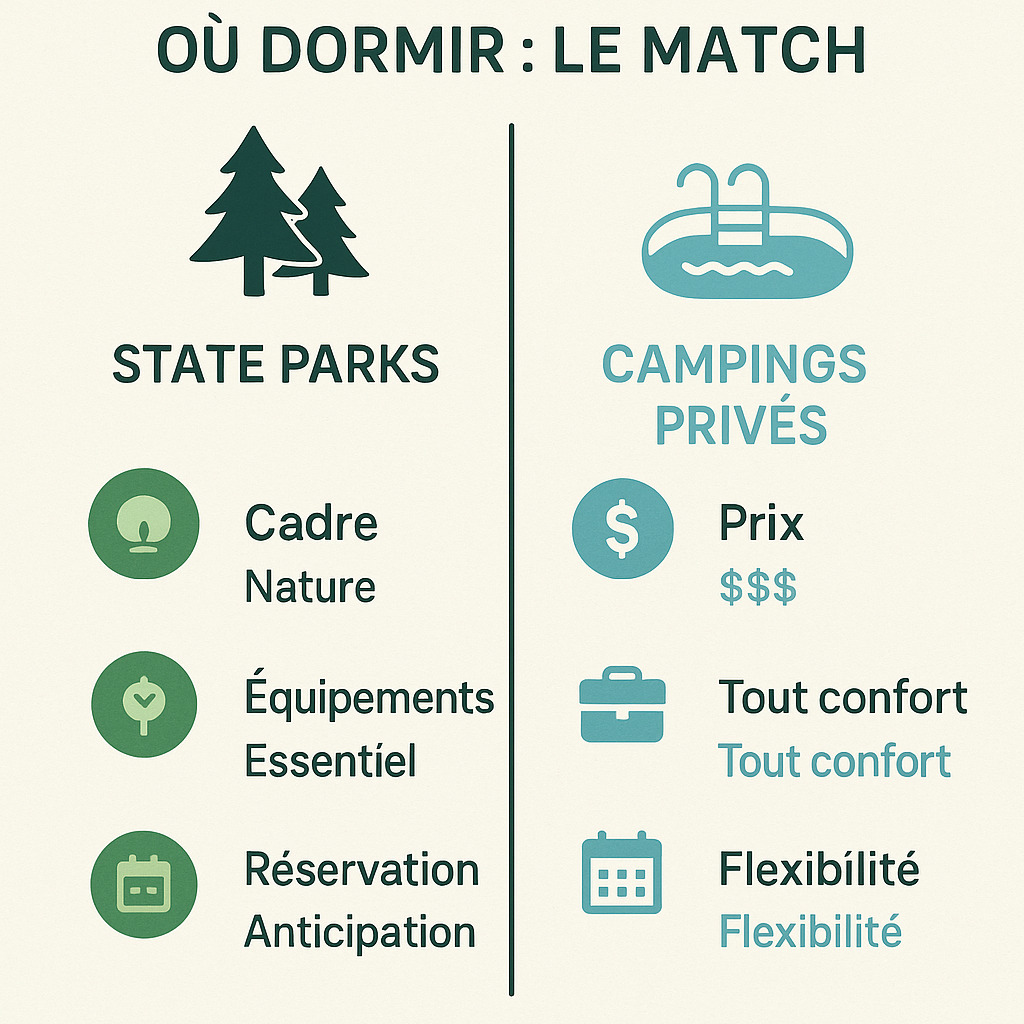
The fateful question: where are we going to park our home for the night?
❌ Wild camping (‘Boondocking’): forget about it (almost)
Let’s be direct: wild camping as it’s known in Europe is strictly forbidden in most of Florida. Don’t try to sleep in a beach parking lot or on the side of a road, the fine is steep. The famous “tolerance” in Walmart parking lots is a myth: it’s up to the discretion of the store manager and is for a single “transit” night, not for setting up your table and chairs. In short, don’t count on it.
⭐ State Parks: your best spots
These are Florida’s gems. Campgrounds run by the state, often located in exceptional natural settings (seaside, forest, near springs…). They are very well-maintained and much cheaper than private campgrounds (around $30-45). The flip side? They are extremely popular. You need to reserve your spot on the Florida State Parks Reservations website months, or even 11 months in advance for the most popular ones like Bahia Honda State Park.
🏕️ Private campgrounds (KOA, etc.): the safe bet
They are more expensive ($50-100+), but they offer all the comforts: electricity, water, sewer hookups (“full hookups”), a pool, laundry facilities… It’s the easy solution, perfect for taking a “rest” from the nomadic life, doing all your laundry, and recharging your batteries (both yours and the vehicle’s).
The essential apps to download before you go
Your smartphone is your best co-pilot. Here are the apps that will be a lifesaver more than once:
- Park4Night: A standard in Europe, it’s also being used more and more in the USA. It’s the essential app for finding a place to sleep, with many reviews from the community.
- The Dyrt / Campendium: The American standards for finding and booking campgrounds. Extremely comprehensive, with filters to find exactly what you’re looking for.
- GasBuddy: We’ve already mentioned it, but it’s essential for finding the cheapest gas around you.
- iOverlander: Very useful for finding water points, dump stations, public showers… A real gold mine of information shared by travelers.
So, ready to feel the warm sand beneath your feet?
There you have it. The plan, the tips, the budget, the pitfalls to avoid. It might seem like a lot, but deep down, it all comes down to one thing: adventure.
Renting an RV in Florida isn’t just about choosing a mode of transport or accommodation. It’s about deciding to travel differently. It’s about giving yourself the ultimate luxury of freedom. The freedom to wake up facing the ocean, to change your plans on a whim, and to create memories unlike any other.
All the practical questions we’ve covered in this guide? They aren’t obstacles. They’re just steps on your pre-takeoff checklist.
The biggest risk isn’t taking the wrong turn or struggling with the dump station. The biggest risk is never daring to go at all.
So, the only question left is: when are you booking? 😉
Florida is waiting for you. And so is your home on wheels. 🚐☀️
